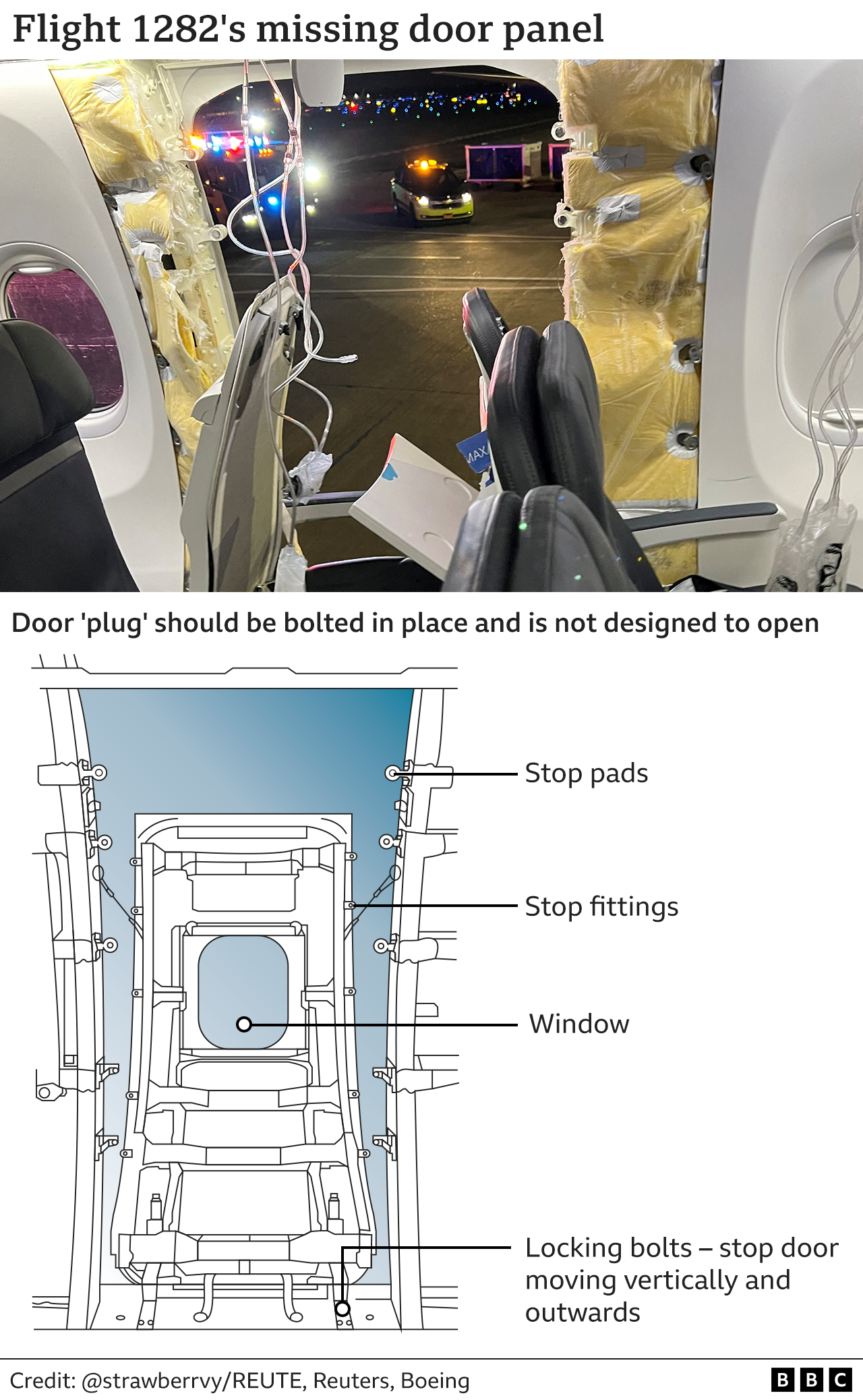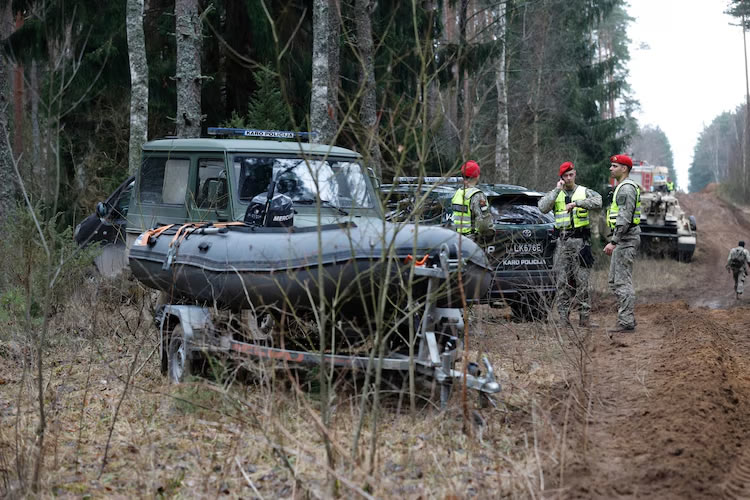United Airlines said “installation issues” relating to door plugs would be “remedied” before the aircraft type would return to service.
Inspections began after a section of the fuselage fell from an Alaska Airlines 737 Max 9 on Friday.
Alaska Airlines says it has since found “some loose hardware” on some Max 9s.
The Federal Aviation Administration (FAA), which regulates air travel in the US, has grounded 171 planes of the same type.
United said: “Since we began preliminary inspections on Saturday, we have found instances that appear to relate to installation issues in the door plug – for example, bolts that needed additional tightening.”
The door plug is a piece of fuselage, with a window, that fills the space where an emergency exit would be in certain configurations.
It was this part of the Alaska Airlines plane which dramatically fell off mid-flight over the US state of Oregon, eventually landing in a teacher’s back garden.
The aircraft made an emergency landing but none of the passengers or crew were seriously injured.
The plane’s door plug was recovered from a teacher’s backyard in Oregon and was found without the four bolts, the National Transportation Safety Board said on Monday night.
Its chair Jennifer Homendy told reporters that it’s possible the bolts were missing from the start but they may have come off in the descent.
The vast majority of Boeing 737 Max 9s used in the US are operated by United Airlines and Alaska, while Turkish Airlines, Panama’s Copa Airlines and Aeromexico have also grounded jets of the same model for inspections.
Watch: Teacher ‘pretty surprised’ to find plane panel in yard
United said it had cancelled 200 flights as of Monday and expected significant cancellations on Tuesday.
“We have been able to operate some planned flights by switching to other aircraft types, avoiding about 30 cancellations each on Monday and Tuesday,” United added.
Alaska Airlines said that initial reports from technicians preparing its 737 Max 9 fleet for inspection indicated “some loose hardware was visible on some aircraft”.
“When we are able to proceed with the formal inspection process, all aircraft will be thoroughly inspected in accordance with detailed instructions provided by the FAA in consultation with Boeing,” it said.
“Any findings will be fully addressed in a matter that satisfies our safety standards and FAA compliance. The formal inspections will also require documenting all findings and those will be reported to the FAA. No aircraft will be returned to service until all of these steps are complete.”
Earlier, the FAA said it had provided a checklist for operators to adhere to during inspections.
The FAA said all 737 Max 9 aircraft would remain grounded until operators “complete enhanced inspections which include both left and right cabin door exit plugs, door components, and fasteners”.
“Operators must also complete corrective action requirements based on findings from the inspections prior to bringing any aircraft back into service,” the statement added.
- ‘Days-long search for plane’s blown-out panel ended by teacher
Flight 1282 reached 16,000ft (4.8km) when it began its emergency descent on Friday evening, according to flight tracking data.
Images shared online – and later by investigators – showed a wide hole in the side of the craft, with oxygen masks dangling from the ceiling.
Passengers were quoted by The Oregonian newspaper as saying that a young boy seated near the affected area had his shirt ripped off by the force of the decompression.
The US National Transportation Safety Board (NTSB), which is leading an investigation into the incident, said pilots had reported pressurisation warning lights on three previous flights made by the specific Alaska Airlines Max 9 involved in the incident.
The jet had been prevented from making long-haul flights over water so that the plane “could return very quickly to an airport” in the event the warnings happened again, NTSB chief Jennifer Homendy said.
It is not clear if there is a link between the issues that led to those warnings, and the issue that caused the blowout on 5 January.

Alaska Airlines said in its most recent statement: “While we await the airworthiness directive (AD) inspection criteria from the FAA and Boeing, our maintenance teams are prepared and ready to perform the required inspections of the mid exit door plugs on our 737-9 Max fleet.
“The 737-9 Max grounding has significantly impacted our operation. We have cancelled 170 Sunday flights and 60 cancellations for Monday, with more expected.”
Boeing said in a statement: “Safety is our top priority and we deeply regret the impact this event has had on our customers and their passengers.”
The company’s 737 Max has been described as “the most scrutinised transport aircraft in history” after a series of safety issues.
In late 2018 and early 2019, two of its aircraft were lost in near identical incidents, off the coast of Indonesia and outside the Ethiopian capital Addis Ababa.
A total of 346 people were killed. Both crashes were caused by flawed flight control software, which ultimately forced the planes into catastrophic dives, despite the best efforts of the pilots.

















+ There are no comments
Add yours